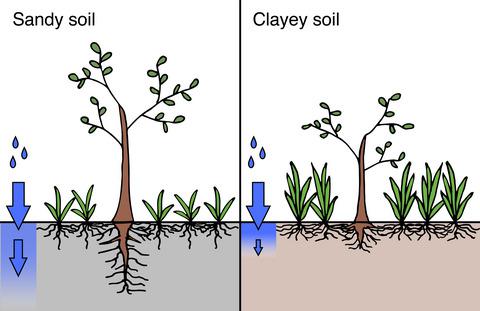Our official English website, www.x-mol.net, welcomes your feedback! (Note: you will need to create a separate account there.)
Root‐niche separation between savanna trees and grasses is greater on sandier soils
Journal of Ecology ( IF 5.5 ) Pub Date : 2020-07-27 , DOI: 10.1111/1365-2745.13475 Madelon F. Case 1 , Jesse B. Nippert 2 , Ricardo M. Holdo 3 , A. Carla Staver 1
中文翻译:

在沙质土壤上,稀树草原与草之间的根生态位分离更大
更新日期:2020-07-27
Journal of Ecology ( IF 5.5 ) Pub Date : 2020-07-27 , DOI: 10.1111/1365-2745.13475 Madelon F. Case 1 , Jesse B. Nippert 2 , Ricardo M. Holdo 3 , A. Carla Staver 1
Affiliation

|
- In savannas, partitioning of below‐ground resources by depth could facilitate tree–grass coexistence and shape vegetation responses to changing rainfall patterns. However, most studies assessing tree versus grass root‐niche partitioning have focused on one or two sites, limiting generalization about how rainfall and soil conditions influence the degree of rooting overlap across environmental gradients.
- We used two complementary stable isotope techniques to quantify variation (a) in water uptake depths and (b) in fine‐root biomass distributions among dominant trees and grasses at eight semi‐arid savanna sites in Kruger National Park, South Africa. Sites were located on contrasting soil textures (clayey basaltic soils vs. sandy granitic soils) and paired along a gradient of mean annual rainfall.
- Soil texture predicted variation in mean water uptake depths and fine‐root allocation. While grasses maintained roots close to the surface and consistently used shallow water, trees on sandy soils distributed roots more evenly across soil depths and used deeper soil water, resulting in greater divergence between tree and grass rooting on sandy soils. Mean annual rainfall predicted some variation among sites in tree water uptake depth, but had a weaker influence on fine‐root allocation.
- Synthesis. Savanna trees overlapped more with shallow‐rooted grasses on clayey soils and were more distinct in their use of deeper soil layers on sandy soils, consistent with expected differences in infiltration and percolation. These differences, which could allow trees to escape grass competition more effectively on sandy soils, may explain observed differences in tree densities and rates of woody encroachment with soil texture. Differences in the degree of root‐niche separation could also drive heterogeneous responses of savanna vegetation to predicted shifts in the frequency and intensity of rainfall.
中文翻译:

在沙质土壤上,稀树草原与草之间的根生态位分离更大
- 在热带稀树草原,按深度划分地下资源可促进树木与草共存,并使植被对降雨模式的变化做出反应。但是,大多数评估树木与草根生态位分配的研究都集中在一个或两个地点,从而限制了降雨和土壤条件如何影响生根重叠程度在环境梯度上的普遍性。
- 我们使用两种互补的稳定同位素技术对南非克鲁格国家公园的八个半干旱稀树草原站点的优势树和草之间的吸水深度和(b)细根生物量分布中的变化进行量化。地点位于不同的土壤质地(粘土玄武岩土壤与沙质花岗岩土壤)上,并沿年均降水量梯度成对。
- 土壤质地预测平均吸水深度和细根分配的变化。在草保持根系靠近地表并持续使用浅水的同时,沙质土壤上的树木在土壤深度范围内更均匀地分布了根系,并使用了更深的土壤水,从而导致树木和草根在沙质土壤上的发散更大。平均年降水量预测了树木不同部位的水吸收深度之间存在一些差异,但对细根分配的影响较小。
- 综合。稀树草原与粘土质土壤上的浅根草重叠更多,在沙质土壤上使用更深的土壤层时更明显,这与预期的入渗和渗滤差异一致。这些差异可以使树木更有效地逃避在沙质土壤上的草竞争,这可以解释观察到的树木密度和木质侵蚀率随土壤质地变化的差异。根-生境分离程度的差异也可能导致热带稀树草原植被对降雨频率和强度的预期变化的异质响应。


























 京公网安备 11010802027423号
京公网安备 11010802027423号